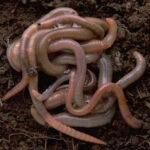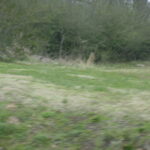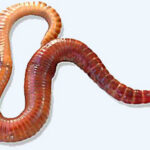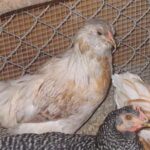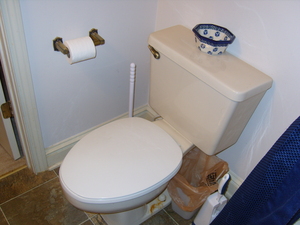Raising earthworms can be a profitable hobby with rewards beyond financial gain. Worms are popular among fishermen for bait, but you can also grow your own high-protein feed for your pet reptiles and birds, as well as your chickens and pigs if you live on a farm. Earthworms can be added to your compost pile to create an even richer product to fertilize your garden and flowers. Choosing which worm species to raise depends upon the ultimate goal you desire for your worm farm.
There are 4400 species of worms, all with unique characteristics that make them perfectly adapted to their role in nature. In the interest of brevity this article will only cover a few species most commonly known and raised for human use!
Canadian Nightcrawlers, also called Common Earthworms,(Lumbricus terrestris) are popular fishing bait, and sometimes found as feed in pet stores that sell exotic pets. They are extremely difficult to raise at home since they cannot withstand warmer temperatures, and grow and reproduce slowly. It’s easier to harvest them from their natural habitat (your back yard or cow pasture), since this worm species prefers to tunnel deeply, is somewhat territorial, and will not grow or reproduce if their home is disturbed. Canadian Nightcrawlers prefer an environment 45 to 50 degrees F, and will not survive above 65 degrees F, although they will keep several months in the refrigerator. As fishing bait, the Canadian Nightcrawler is lively on the hook but will only live about five minutes once submerged, and cannot withstand salt water or freezing water.
Red Worms (Eisenia fetida) are also known as manure worms. Red Worms are grown almost exclusively for composting, and their small size (1-1/2″ to 2-1/2″) makes them an ideal snack for aquarium fish or small reptiles and birds. They are less sensitive to the heat and sunlight than nightcrawlers. Fishermen use them to lure fish that prefer smaller bait, and Red Worms live longer underwater than Canadian Nightcrawlers.
Red Worms are prolific breeders, and mature to their reproductive stage in three months. They are the easiest worms for the inexperienced worm farmer to raise. They make their home in manure or decaying plant matter, unlike nightcrawlers who prefer tunneling through soil. Red Worms are the ideal composting worms. They can be raised in a compost bin or in an outdoor compost pile. We won’t go into the specifics of building a compost bin or pile here since there are so many ways to do it. As long as your Red Worms have food and water, they won’t wander away from an outdoor compost pile. They aren’t adventurers; they’ll stay where they are comfortable! In the winter they will stay in the bottom center of the pile where it’s warmer, but in the warmer months will come up through the pile to turn it into a rich mulch for your garden. Covering the pile with a tarp in the coldest weather will help retain heat and encourage the worms to eat their way closer to the top.
The slightly larger cousin of the Red Worm, the Red Wiggler (Lumbricus rubella) is also a preferred composting worm and will grow from three to four inches long. They are good fishing bait that stays lively on the hook, and great for feeding larger pond fish, reptiles, and birds. Like the Red Worm, they are top feeders and don’t burrow deeply into the ground.
European Nightcrawlers (Dendrabaena veneta or eisenia hortensis) are gaining in popularity among fishermen and gardeners. They are also called Belgian Nightcrawlers or Giant Redworms. Although European Nightcrawlers don’t grow as large as Canadian Nightcrawlers they are more tolerant to the heat and cold and can survive in temperatures from 40 to 90 degrees F. European Nightcrawlers have a longer shelf life and can live from three to five weeks in a bait cup.
European Nightcrawlers do not breed as quickly as Red Worms or Red Wigglers. They mature to the reproductive stage in approximately six months and will grow from four to eight inches long. European Nightcrawlers are excellent for fish bait, composting, and supplemental feed for koi as well as some snakes and lizards. They like to burrow in shallow soil, and when released into a properly maintained organic garden they will keep the soil loose and aerated as well as leaving egg casings which add nutrients for plant growth.
For those worm wranglers who want to stock their farm with nightcrawlers, the European Nightcrawler is the one to choose. They are suitable for most climates, and their hardiness as a fishing worm is unbeatable. Ice fishermen love them, since the European Nightcrawler will stay active on the hook for up to 30 minutes after being submerged in freezing water. They can also tolerate brackish ponds or salt water.
African Nightcrawlers (Eudrilus eugeniae) are tropical worms often used for composting and fishing. They are more difficult to raise that European Nightcrawlers. They have a narrower range of tolerable temperatures. Although they can withstand higher temperatures than other worms, if the humidity is adequate, they often die at temperatures below 60 degrees. They also have a tendency to make their escape from the worm bed. African Nightcrawlers are one of the most prolific worms, however; a thousand worms can become 12 to 14 thousand in a single year!
You may be able to find enough Red Worms or Red Wigglers in that pile of rotting leaves in the back yard to start a worm farm, but might be quicker and easier to buy them from a supplier. European Nightcrawlers and African Nightcrawlers are commercially available. Forget about digging up common nightcrawlers from your back yard if you want to start a worm farm. Just harvest enough to go fishing and enjoy yourself!
There are many resources for buying earthworm livestock online or you may find a local or regional wholesaler. Raising earthworms is an easy and inexpensive hobby or home business to start, and you can feed them for free with the stuff you’d normally put into the compost pile!
